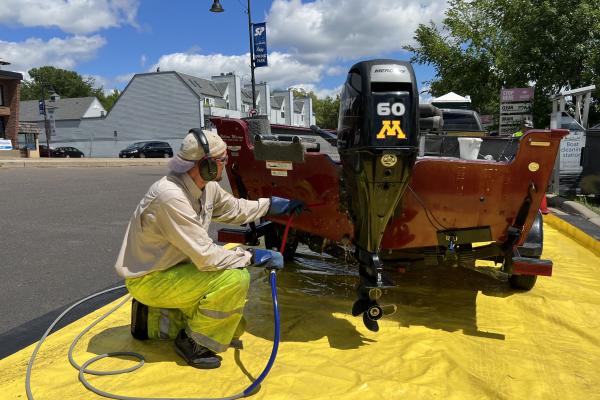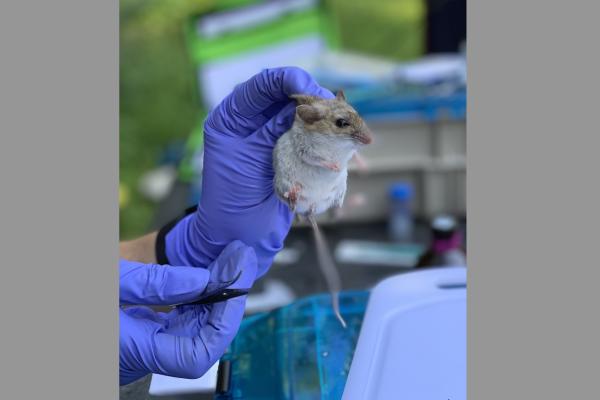2023 Sizzling Summer Science Spotlight ( S4 ) series
June 30, 2023
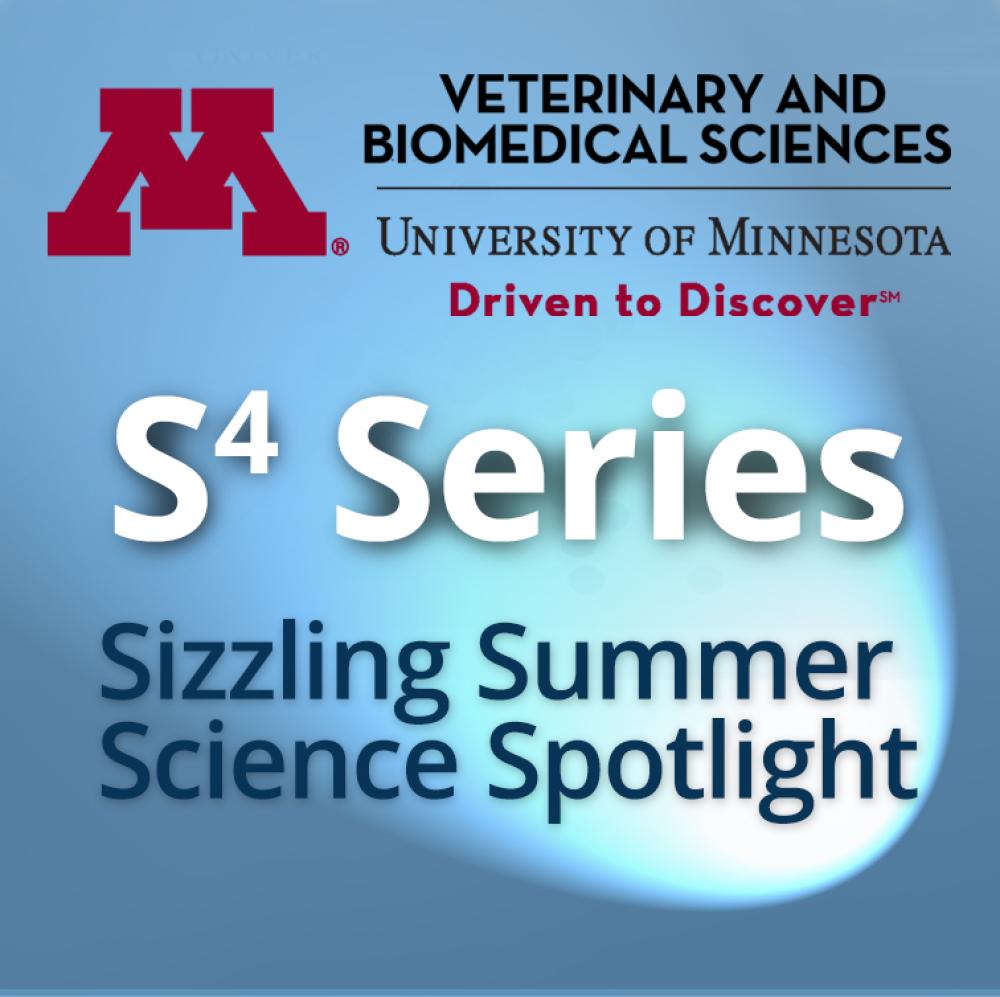
The Department of Veterinary and Biomedical Sciences (VBS) kicked off the 7th Annual Sizzling Summer Science Spotlight (S4) series Thursdays, July 13-August 10, 2023 with five engaging presenters. See flyer for details.
2023 Sizzling Summer Science Spotlight (S4) Speakers

July 13: Dr. Stuart Lichtenberg presentation, "Prion diseases in unconventional contexts."
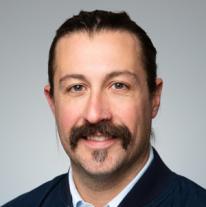
July 20: Dr. Kevin Lang presentation, "Mechanistic dissection of fluoroquinolone killing in bacteria."
Summary: Ciprofloxacin is a widely prescribed fluoroquinolone antibiotic. Fluoroquinolones target type II topoisomerases, trapping the enzymes on DNA, resulting in chromosomal fragmentation and ultimately cell death. The molecular mechanisms that lead to these outcomes are not well understood. Previous studies have shown that fluoroquinolone killing depends on active translation. We attempted to understand the impact of translation on ciprofloxacin activity.
In bacteria, translation and transcription are coupled; ribosomes initiate translation as the ribosomal binding site, encoded on the nascent mRNA, emerges from the actively transcribing RNA polymerase (RNAP). Translating ribosomes have been shown to increase RNAP processivity and prevent RNAP backtracking. Importantly, backtracked RNAPs have been shown to promote DNA repair at the sites of DNA damage. We have found that mutants lacking translation processivity factors are several orders of magnitude less sensitive to ciprofloxacin. Additionally, our studies suggest that mutations inactivating ribosomal processivity factors increase the kinetics of homologous recombination during ciprofloxacin treatment. In cells deficient for homologous DNA repair, we show that slowing down translation improves cell viability, suggesting that cells experience less DNA breaks or repair is promoted through an alternative pathway. Taken together, our studies suggest that transcription-translation coupling is an important factor driving ciprofloxacin activity.
How will this help humans/animals? Antibiotics have been an effective treatment for bacterial infections for nearly a century, leaving them low on the list of medical priorities. Though, as use and development of new antibiotics over the years continued to evolve, so, too, did their bacterial targets. Antibacterial resistance is a significant public health challenge. The World Health Organization (WHO) has identified antimicrobial resistance as one of the top ten global public health threats facing humanity, and estimates that by 2050, it could cause 10 million deaths annually (potentially surpassing deaths due to cancer), with a cumulative economic cost of up to 100 trillion USD. Understanding the mechanism of action for antimicrobials is vital for the design of new drugs.
What do you hope to discover/learn from your research? We hope that our studies will provide new targets for novel drugs and/or targets for drugs that can potentiate antimicrobials currently in use.

July 27: Dr. Bruce Walcheck presentation, "Manipulating Natural Killer Cells to improve cancer immunotherapy."
Summary: Natural killer (NK) cell adoptive transfer into patients with cancer requires cytokine support for these cells to persist. Cytokine stimulation activates ADAM17 (a disintegrin and metalloproteinase-17) in NK cells and this membrane-associated protease then cleaves (clips, sheds) several cell surface receptors critical for NK cell function, and thus functions as a rapid negative feedback mechanism to restrain NK cells in a polyfunctional manner. We have a monoclonal antibody (mAb) that can neutralize ADAM17 function. This mAb is referred to as Medi-1. We have demonstrated in vitro and in vivo that Medi-1 treatment of NK cells greatly enhanced their proliferation and function. We have investigated the mechanism by which Medi-1 treatment enhances NK cell proliferation and function and this data will be presented in my seminar.
How will this help humans/animals? Medi-1 is a novel immunotherapy option to increase the anti-tumor effector functions of human NK cells. We have also characterized canine NK cells and the role of ADAM17 in these cells. Hence, our findings may be reverse translated to provide a novel immunotherapy option for dogs to treat various malignancies.
What do you hope to discover/learn from your research? An understanding of a key regulatory checkpoint process in NK cells that can be manipulated to enhance their capabilities at killing cancer cells in immunosuppressive environments.

August 3: Dr. Dawn Foster-Hartnett & Dr. Roberta O'Connor presentation, "What are achievable goals in DEI for a College of Veterinary Medicine?"
Summary: In this session we will discuss some things we’ve learned in DEI training/committee work and explore practical steps we can take to increase diversity in CVM. What resources have you found helpful? What are your ideas?
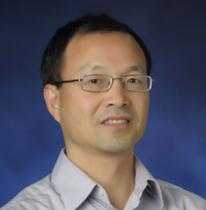
August 10: Dr. Yinduo Ji presentation, "Development of an alternative Anti-MRSA therapeutic agent."
Summary: Multiple drug-resistant bacterial infections pose a growing threat to public health worldwide. In the U.S., Methicillin-resistant S. aureus (MRSA) caused approximately 11,000 deaths in 2011 alone. Community-acquired-MRSA (CA-MRSA), a more virulent form, has spread worldwide, causing severe skin and soft tissue infections even in otherwise healthy patients. S. aureus is also one of the main pathogens that cause bovine mastitis, and livestock associated-MRSA (LA-MRSA) was identified not only in food animals, but also in retail meats worldwide. The rise of multidrug resistance has limited our therapeutic options. The pathogenicity of S. aureus partially relies on various virulence factors that allow the bacterium to evade the host immune system and/or promote survival during infection. We hypothesize that virulence-controlling inhibitors provide alternative antibacterial agents against S. aureus infection. We screened a compound library and identified a lead compound that can effectively inhibit the bacterial ability to invade into human cells. More importantly, the lead compound remarkably decreased the virulence of HA-MRSA and CA-MRSA both in vitro and in vivo. Furthermore, the lead compound had no impact on both bacterial and eukaryotic cells. These findings indicate that the lead compound is a promising anti-virulence inhibitor, which enables us to further improve its potency to combat MRSA infections.

